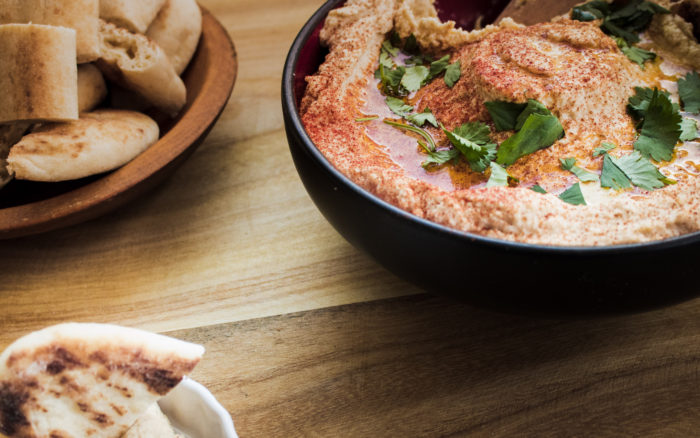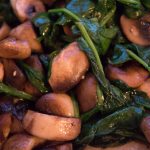This post contains affiliate links. Purchasing through them helps support this site.
I’ve been on a hummus kick – again. But there’s a good reason: we got an upgrade in our cafeteria at work and the hummus bar is spectacular.
However, anyone who works in a hospital, which I do, knows: you do not want to squander one second of your 30-minute lunch break standing in line. Even if the hummus is worth it.
And The Hummus Is Worth It
I wanted it without being yoked to a cafeteria trip.
Hummus has a lot going for it. Besides the earthy, fresh taste, there’s the chameleon-like potential. It can be rustic or refined, can be used a million ways, (here’s a link for 25 of them), and it’s perfectly capable of being the “substance” part of a meal. To me, it’s the Middle Eastern equivalent of refried beans. Yes, I do eat it as its own thing with a spoon.
Nutritionally, hummus is a powerhouse. There is no shortage of online resources touting its benefits. Medicaldaily.com, LiveScience, whfoods.com, and even the lifehack people agree there are plenty of reasons to consume it daily.
I went through several permutations of this recipe – mostly because I couldn’t get the garlic right: there was a harsh, astringent aftertaste. Turns out, you have to give fresh garlic about 30 minutes to mellow before deciding there’s too much. (Thank you to my Lebanese Beach Week Friend, Miss Margaret for that tidbit.) And if you want traditional hummus flavor (which I did for this recipe) you have to make peace with the calorie hit tahini brings. (Maybe forgo the empty calorie pita chips and just eat the hummus.)
For a hummus recipe without tahini, click here.

Traditional Garbanzo Bean (Chickpea) Hummus
Ingredients
- 4 c cooked garbanzo beans (a.k.a chickpeas) My Lebanese friend only uses Progresso brand
- 2 lemons juiced
- 2 FAT garlic cloves or 4 - 6 skinny ones
- 2/3 c tahini
- 1 1/2 tsp Kosher salt
- 6 - 8 T ice cold water
- 2 - 3 T olive oil for garnish
- 1 - 2 tsp paprika for garnish
Instructions
- Place the garbanzo beans, garlic, and lemon juice in a food processor and blitz until it turns into a thick paste.
- With the machine running, add the tahini and salt. Then add the cold water one T at a time until you get a creamy paste with a smooth texture.
- Transfer it to a serving bowl, cover, and refrigerate for at least 30 minutes. Garnish with olive oil and paprika.
Notes
*Sumac is a lemony, red colored spice. I found it in World Spice Merchants in Seattle. Of course, it’s also available at Amazon
This is the pressure cooker I use.





